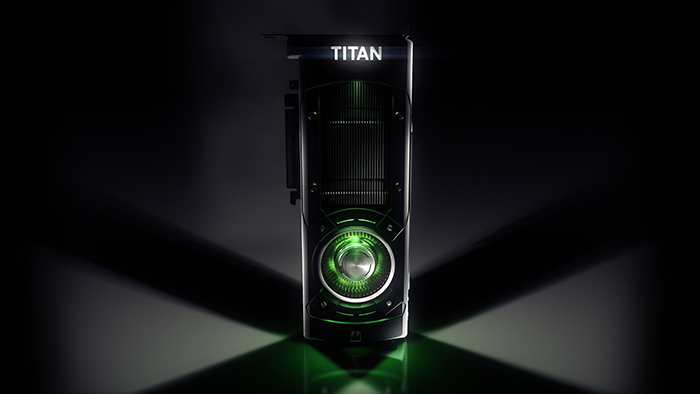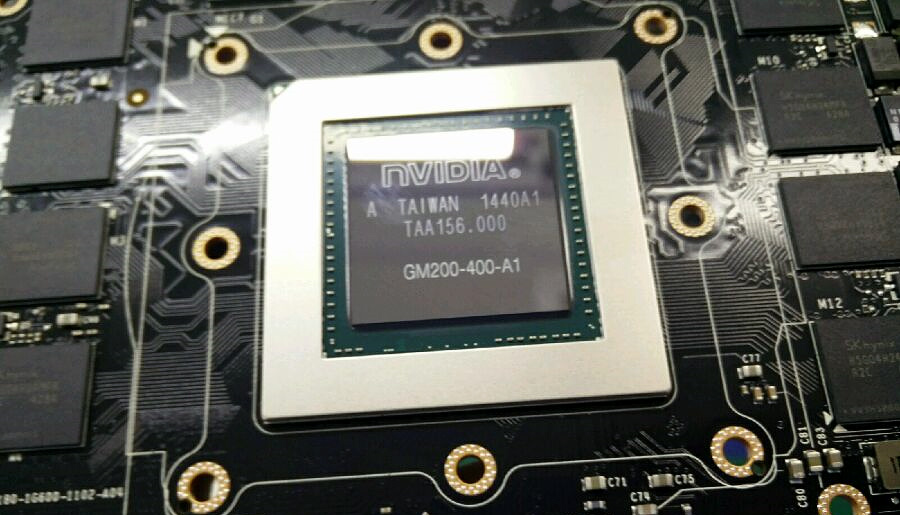Nvidia Corp. unexpectedly unveiled its highest-performing single-chip gaming graphics card at the Game Developers Conference on Wednesday. The new GeForce GTX Titan X will emerge on the store shelves in the coming weeks and will be the pinnacle of the “Maxwell” architecture. Let’s recap what we already know about the GeForce GTX Titan X and what should we expect from it.
The Nvidia GeForce GTX Titan X graphics card with 12GB of onboard GDDR5 memory will be powered by the code-named GM200 graphics processor that contains over eight billion of transistors. The GPU, which is also known as the “Big Maxwell”, is the most complex graphics processor ever made. 12GB of memory indirectly confirm that the graphics processing unit sports 384-bit memory bus, which, given the “Maxwell” architecture (and ROP to memory controller ratio), points to 96 raster operating units. Earlier it was reported that the GM200 would feature 3072 stream processors and 192 texture units, which seem to be accurate information.

The “Big Maxwell” is projected to offer around 33 – 50 per cent higher performance than the GeForce GTX 980, given its configuration, depending on applications. However, keep in mind that Nvidia’s “Maxwell” was not designed to handle professional computing tasks, therefore, it does not support native double precision FP64 compute capabilities. Even the GM200 will not be able to beat its predecessor, the GK110 in high-performance computing tasks (e.g., simulations) that require FP64.
If Nvidia managed to maintain transistor density of the code-named GM204 graphics processor with the GM200, then the chip itself should be pretty large, about 615mm², which will result in extremely high cost. If the GM200’s die size is indeed 615mm², then a 300mm wafer can produce hold only around 95 of such chips. TSMC’s revenue per wafer processed using 28nm fabrication technology was $5850 last year. Therefore, even if GM200’s yield rate is at 100 per cent (all dies are good and can run in full configuration), one chip should cost Nvidia over $61 without testing and packaging. At 85 per cent yield, one GM200 chip costs the GPU designer around $73 without testing and packaging.
The GeForce GTX Titan X graphics board will carry 12GB of GDDR5 memory running at 7GHz. 12GB of memory is not only excessive for today’s video games, but is also very expensive. For some reason, Nvidia decided not to use SK Hynix and Micron’s premium GDDR5 components capable of running at 8GHz, but even current memory sub-system provides 336GB/s of bandwidth, which is a lot. Keeping in mind that Nvidia’s “Maxwell” GPUs use memory bandwidth very efficiently, the new GeForce GTX Titan X should demonstrate unbelievable performance in ultra-high-definition resolutions, such as 3840*2160.
The ultra-expensive GPU and a lot of memory will naturally make the new Titan X a very expensive graphics card. Previously it was reported that the board will cost $1349 in retail when it becomes available.
Keep in mind that many of the details about the GeForce GTX Titan X are yet to be confirmed by Nvidia at the GPU Technology Conference later this month.
Discuss on our Facebook page, HERE.
KitGuru Says: The real surprise about the GeForce GTX Titan X is that Nvidia decided to install 12GB of GDDR5 memory on a consumer-class graphics card. This will ensure that the board’s performance will not be limited by memory capacity any time soon, but this naturally increases the price. What remains to be seen is how high performance of the new Titan X will be in real-life applications. While the board will clearly leave behind existing graphics solution, it is not completely clear whether it is worth $1349.
 KitGuru KitGuru.net – Tech News | Hardware News | Hardware Reviews | IOS | Mobile | Gaming | Graphics Cards
KitGuru KitGuru.net – Tech News | Hardware News | Hardware Reviews | IOS | Mobile | Gaming | Graphics Cards



